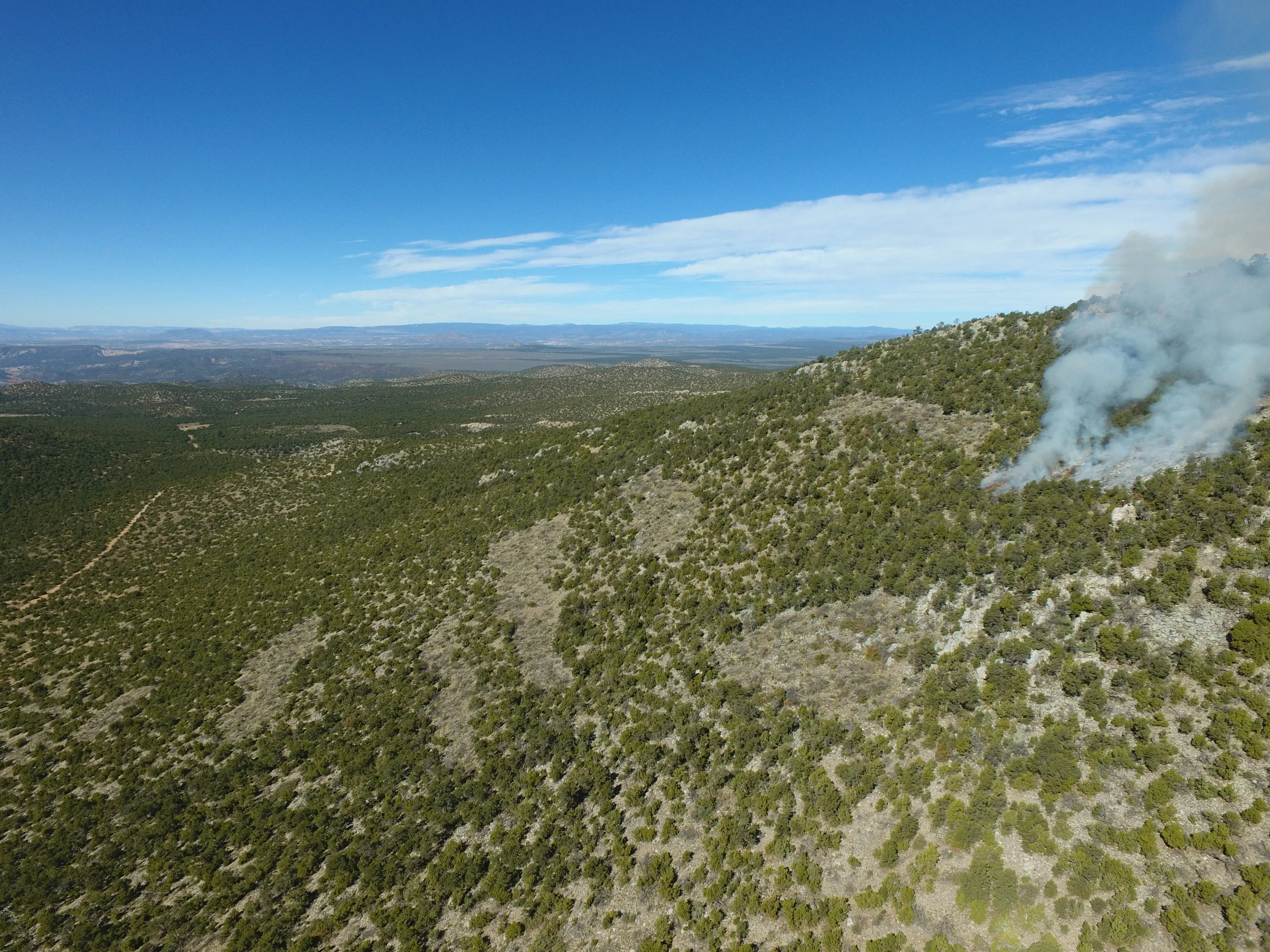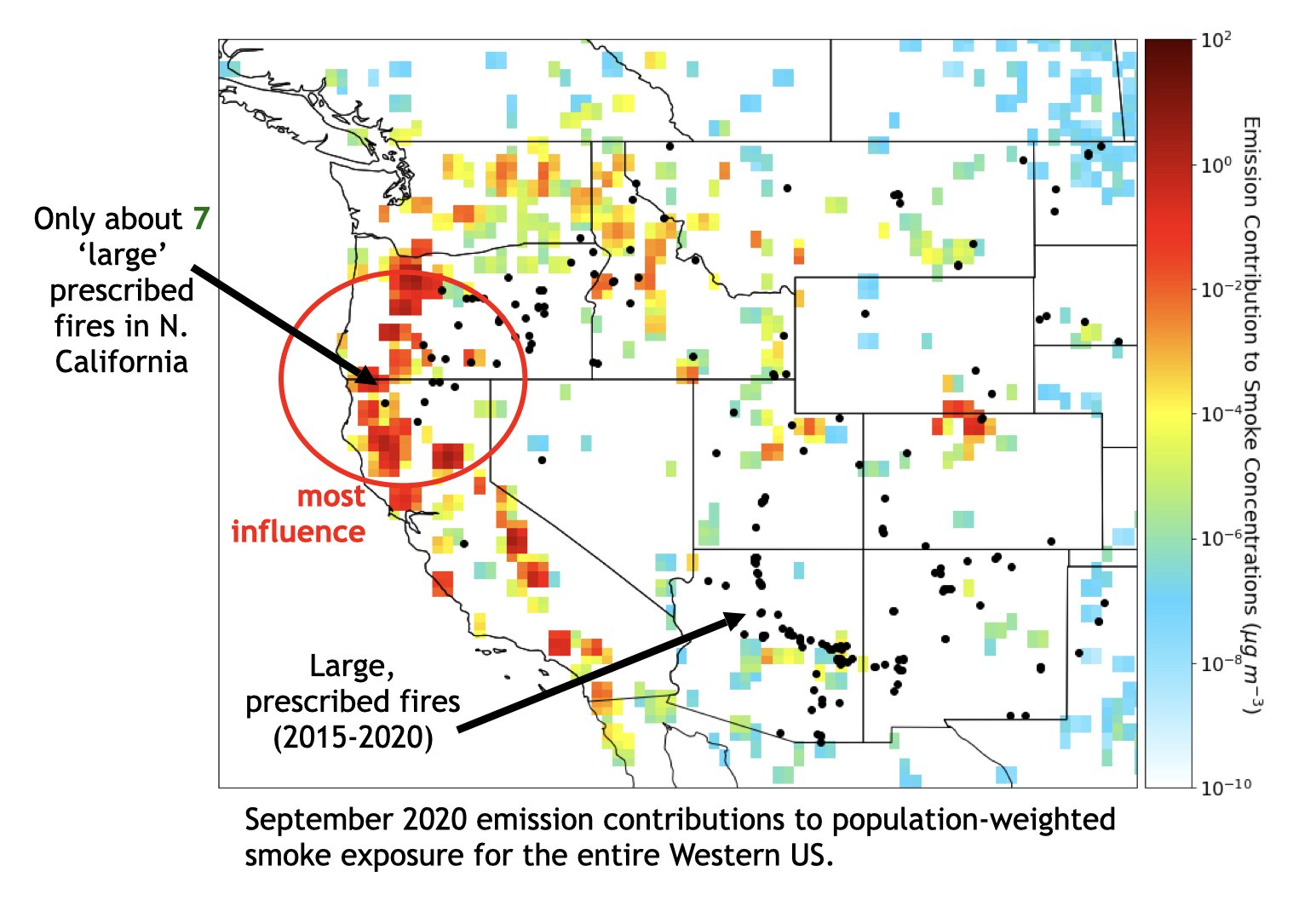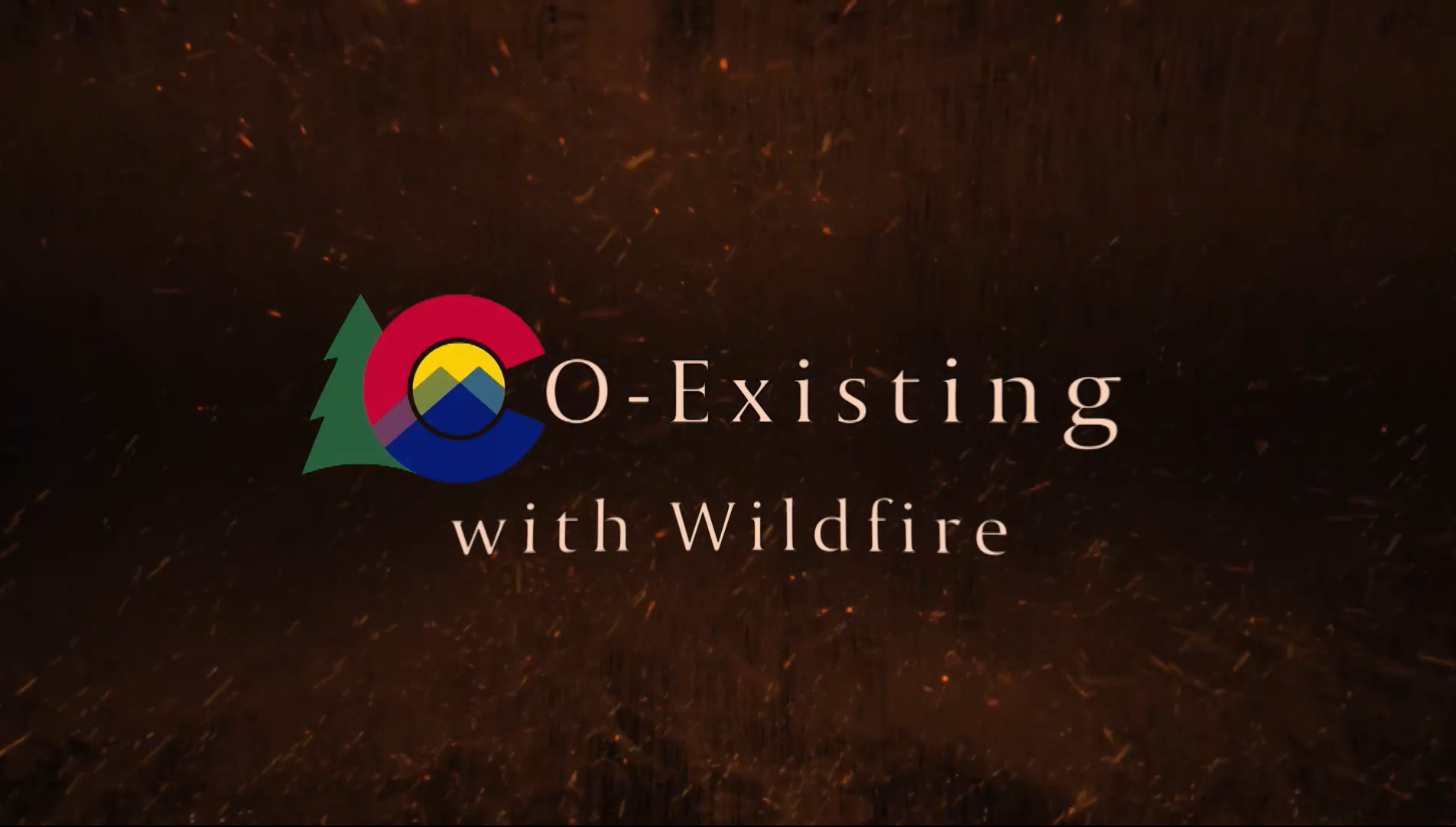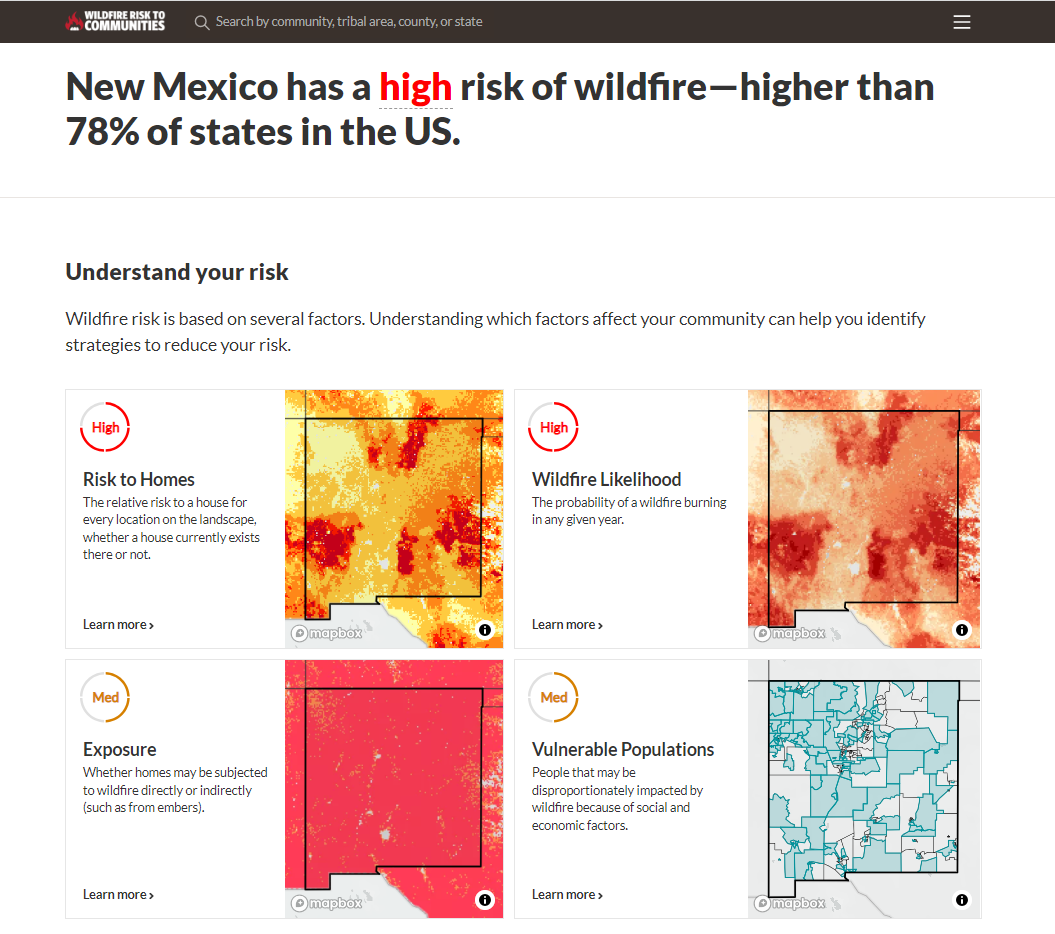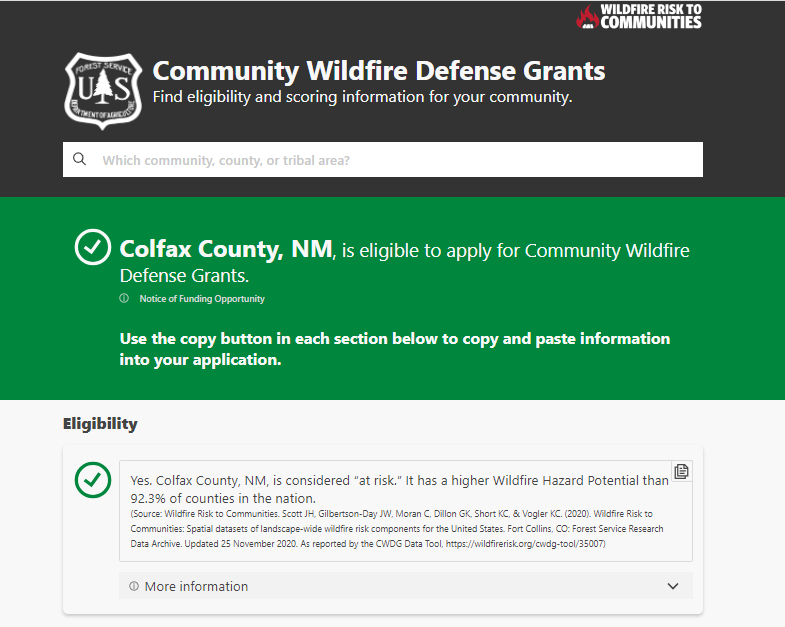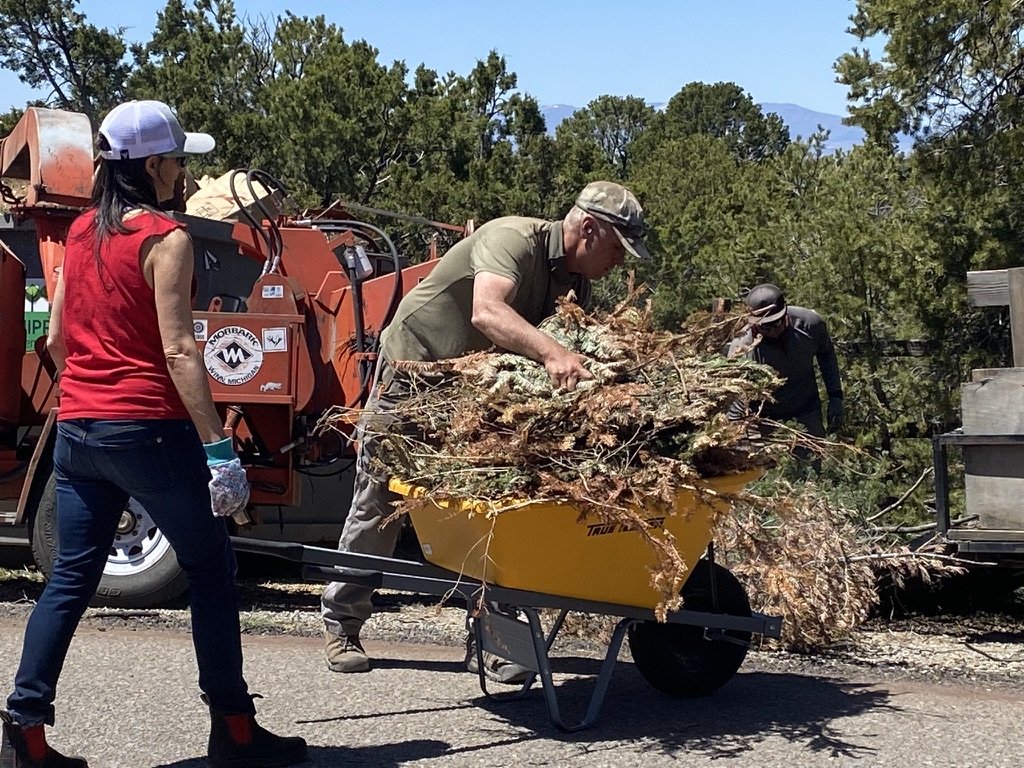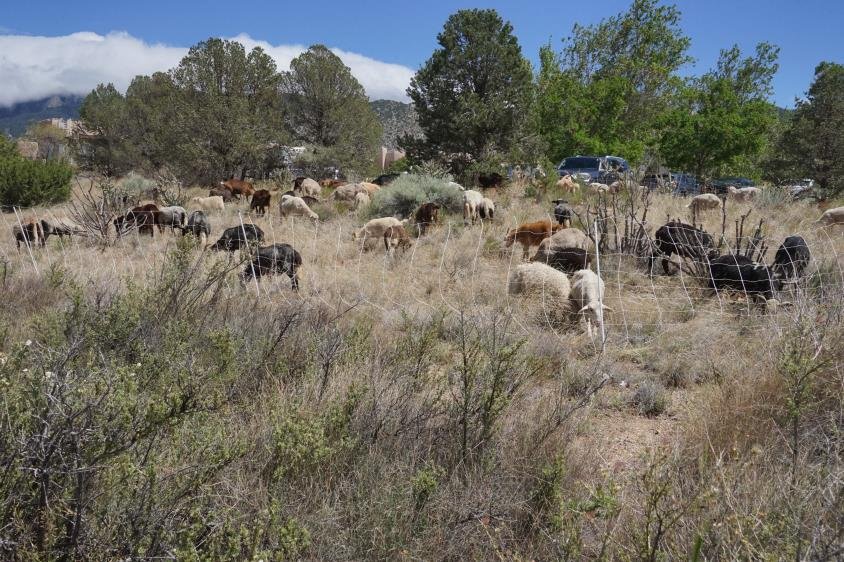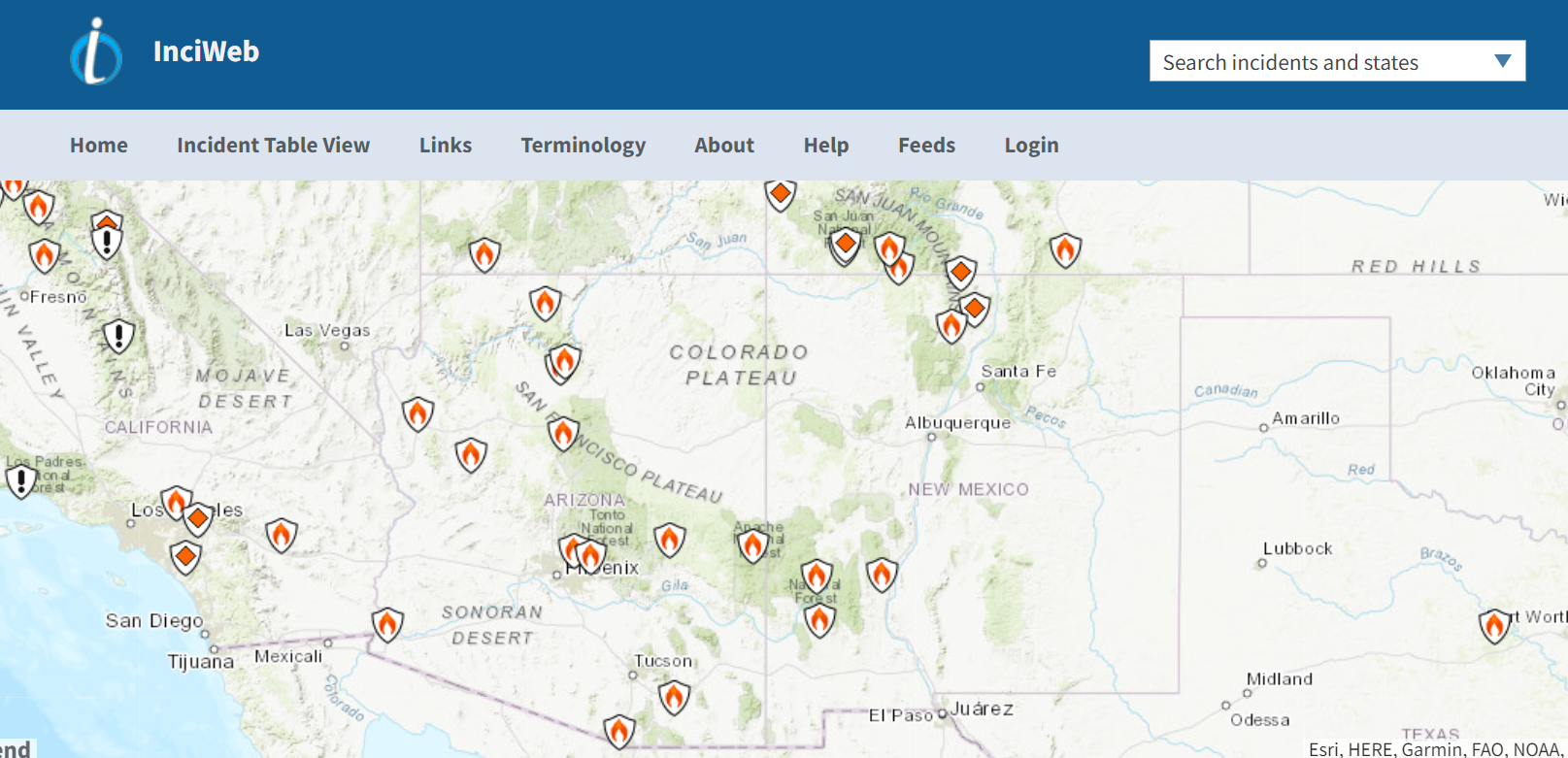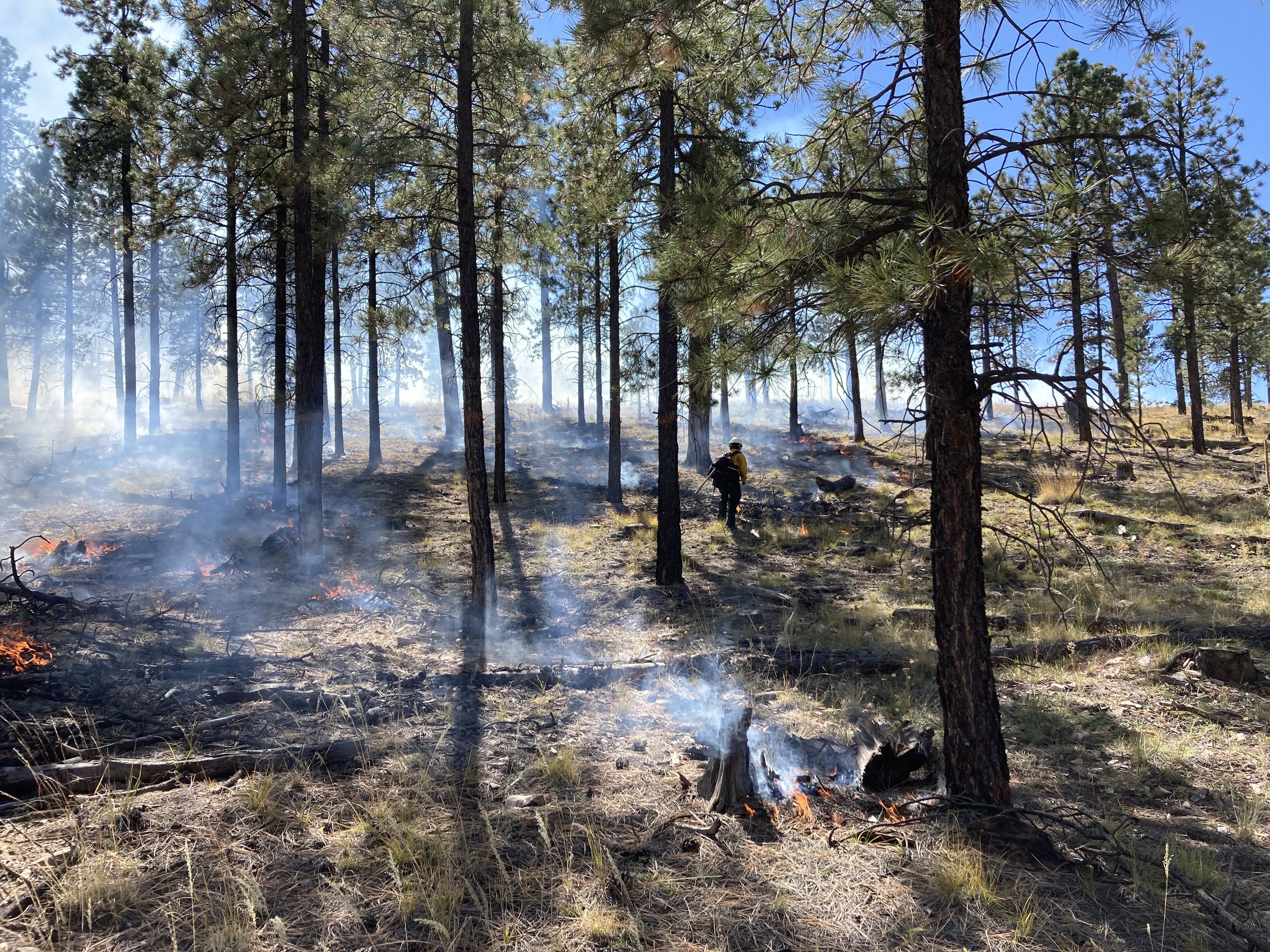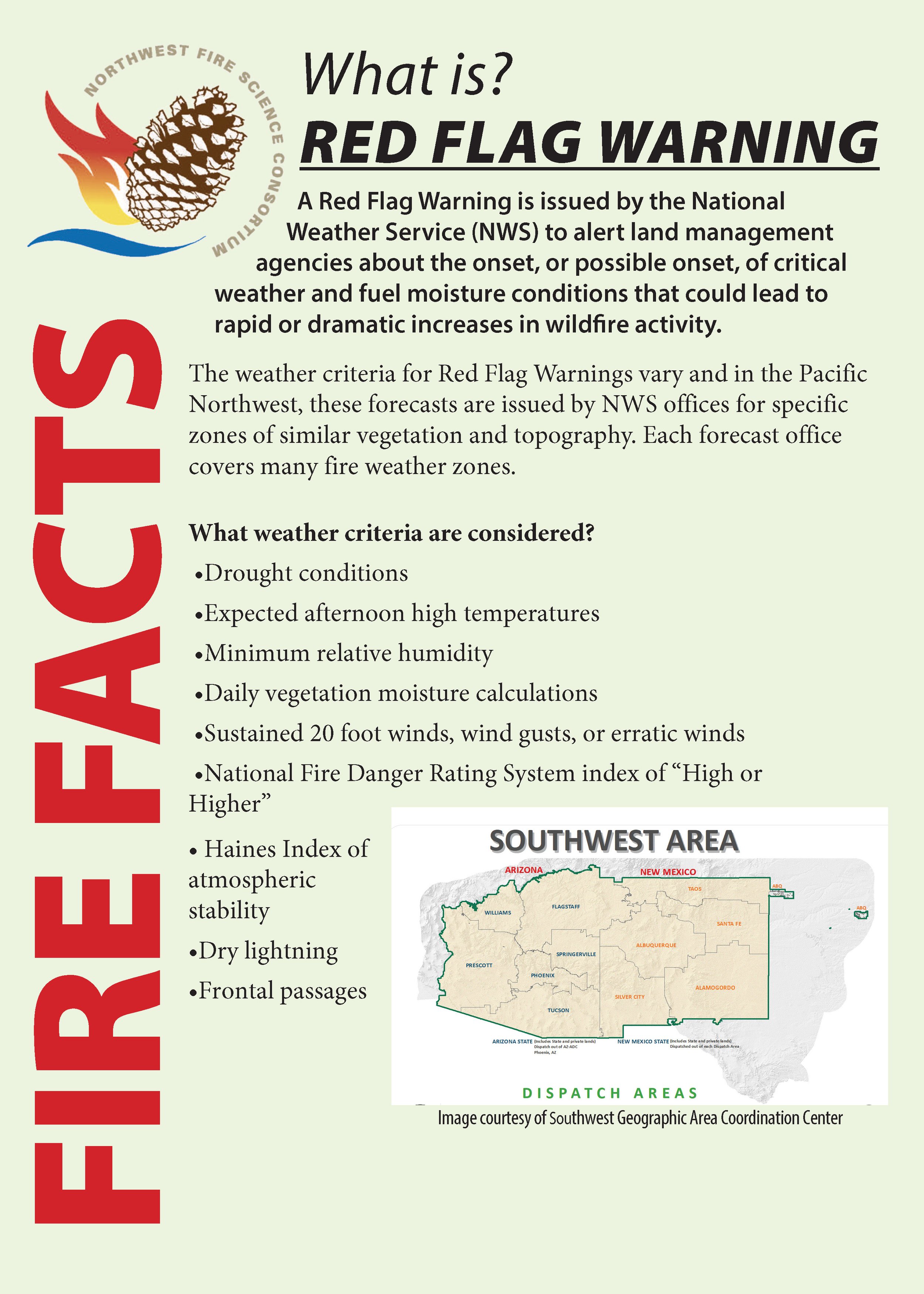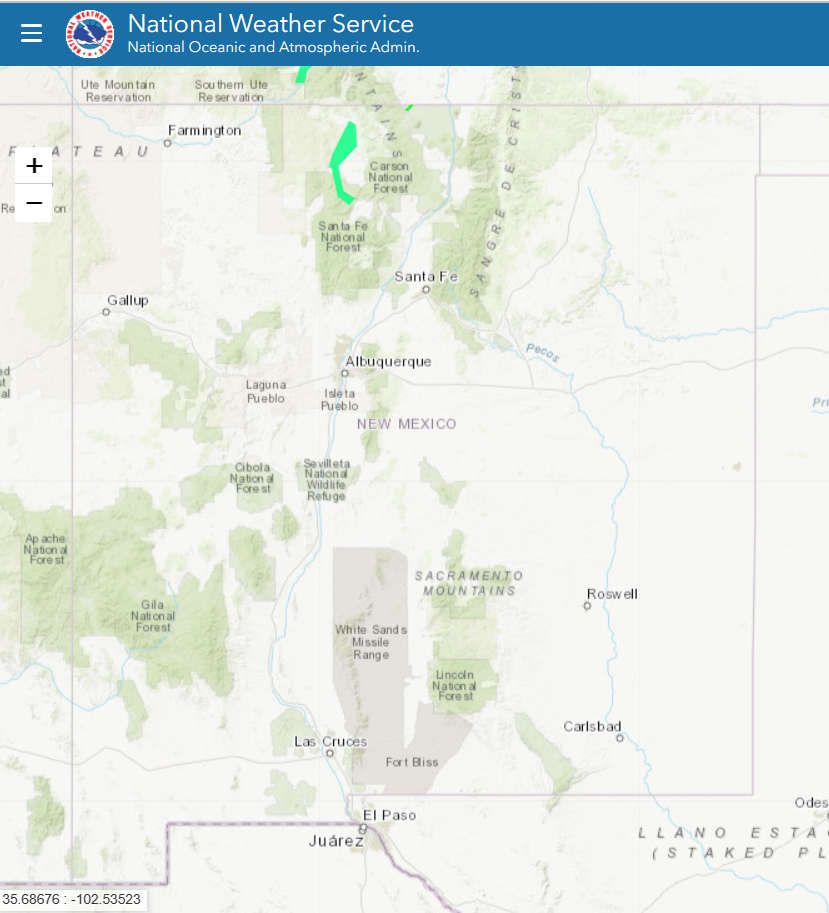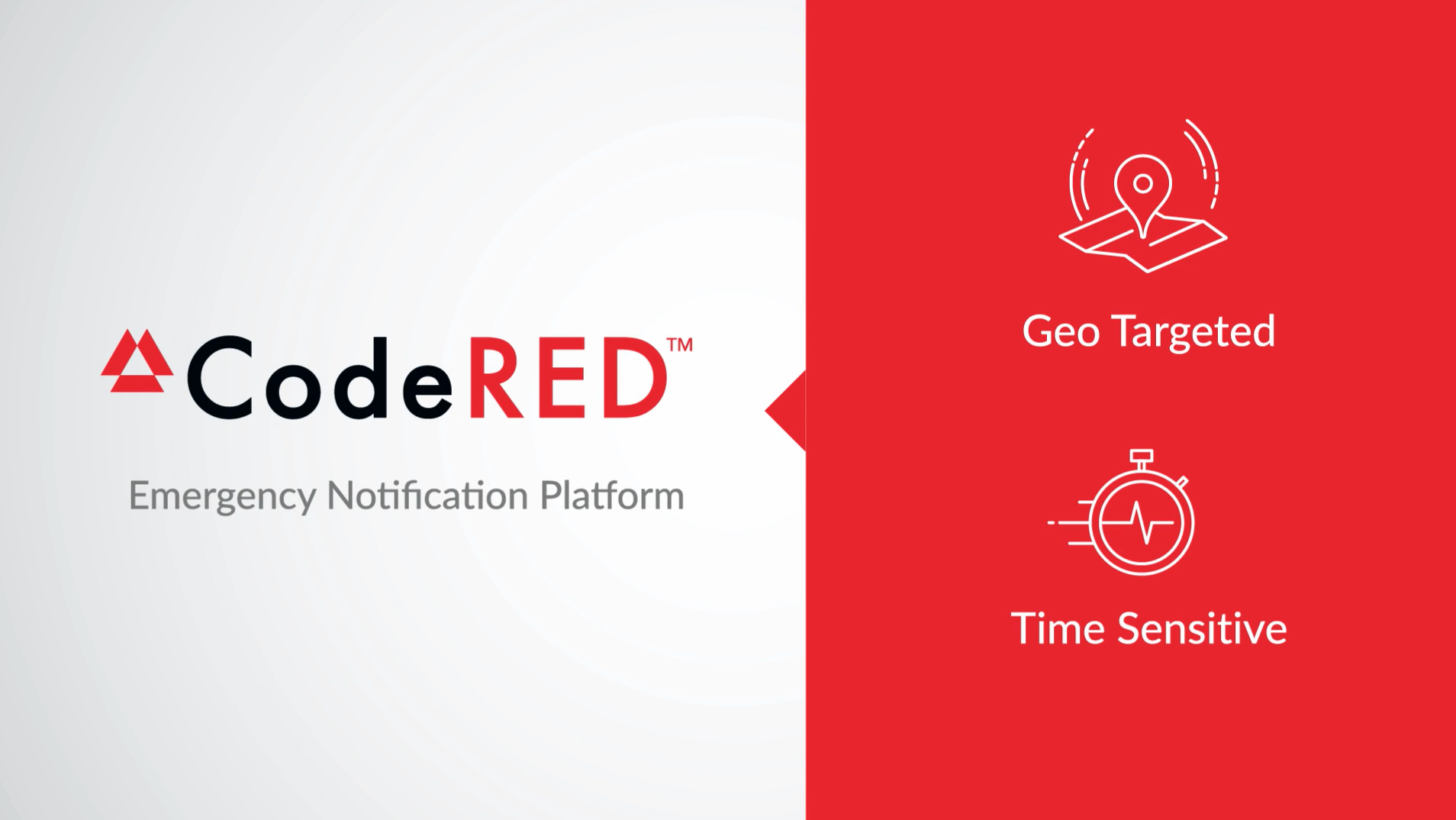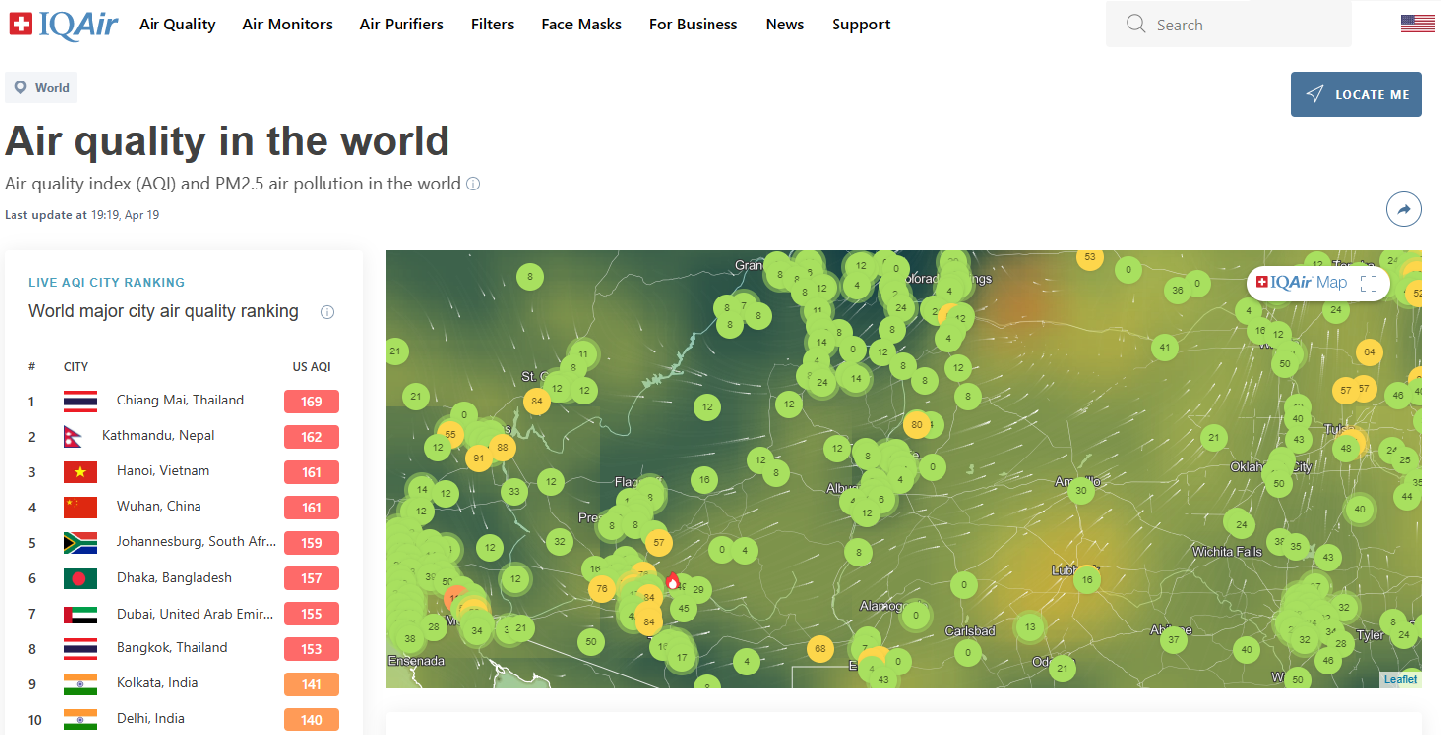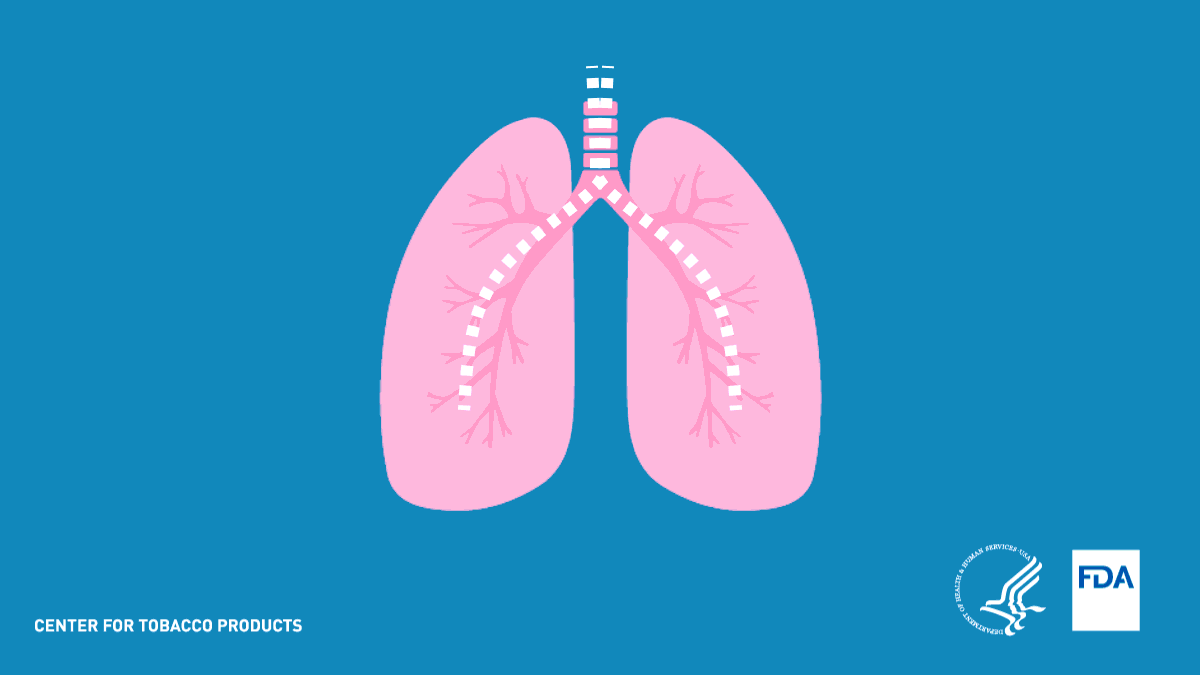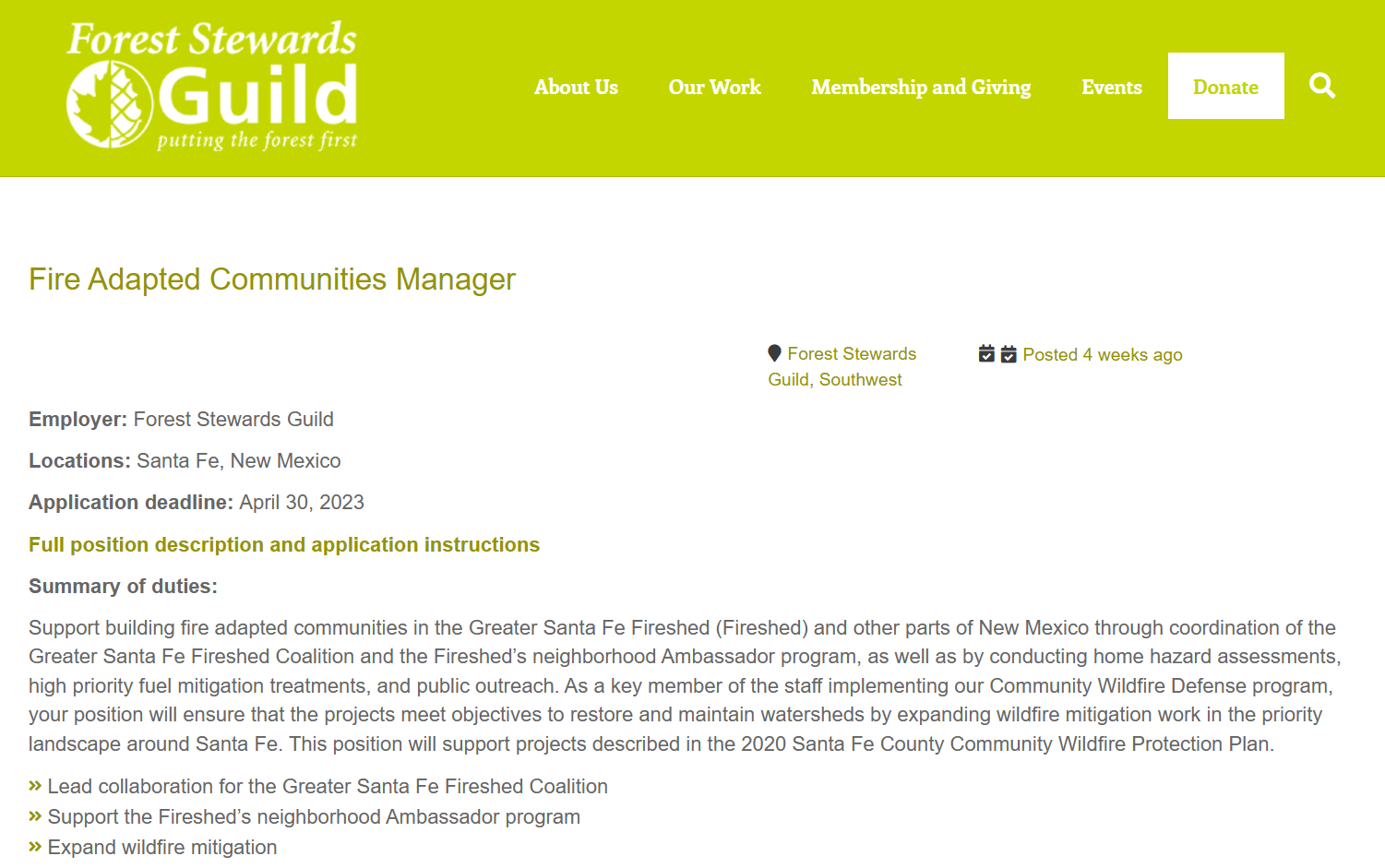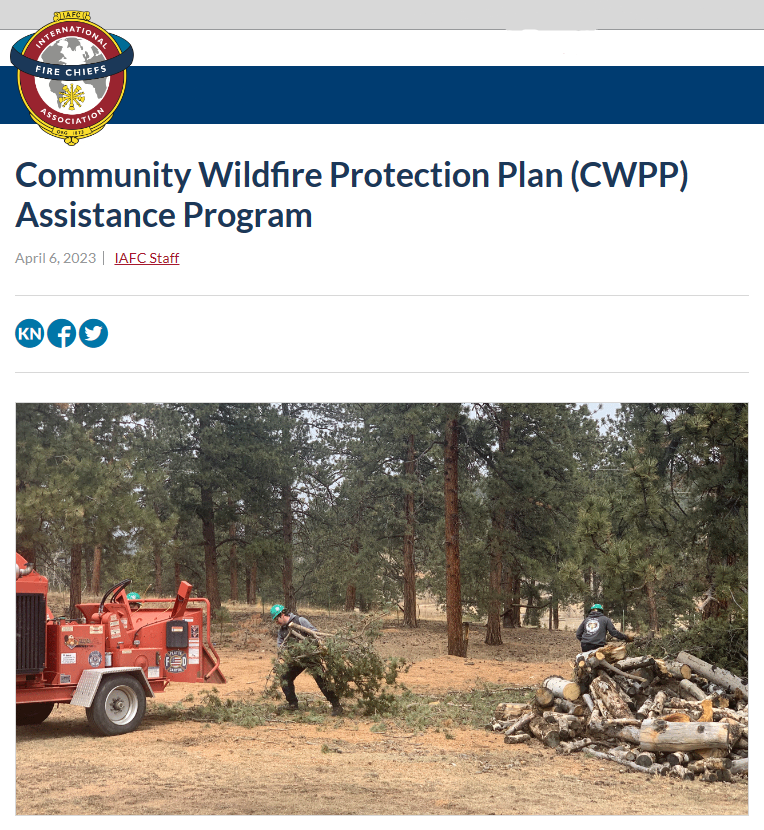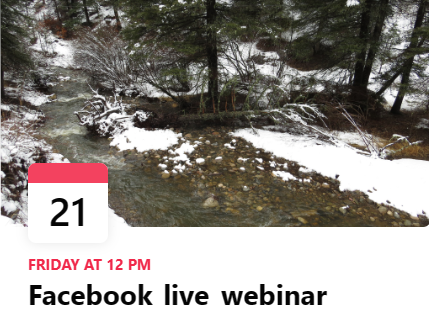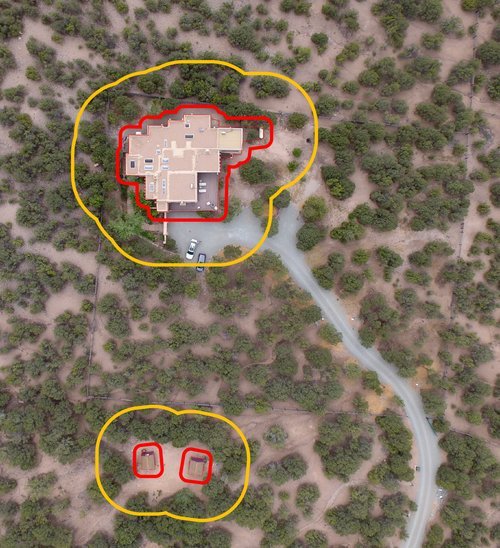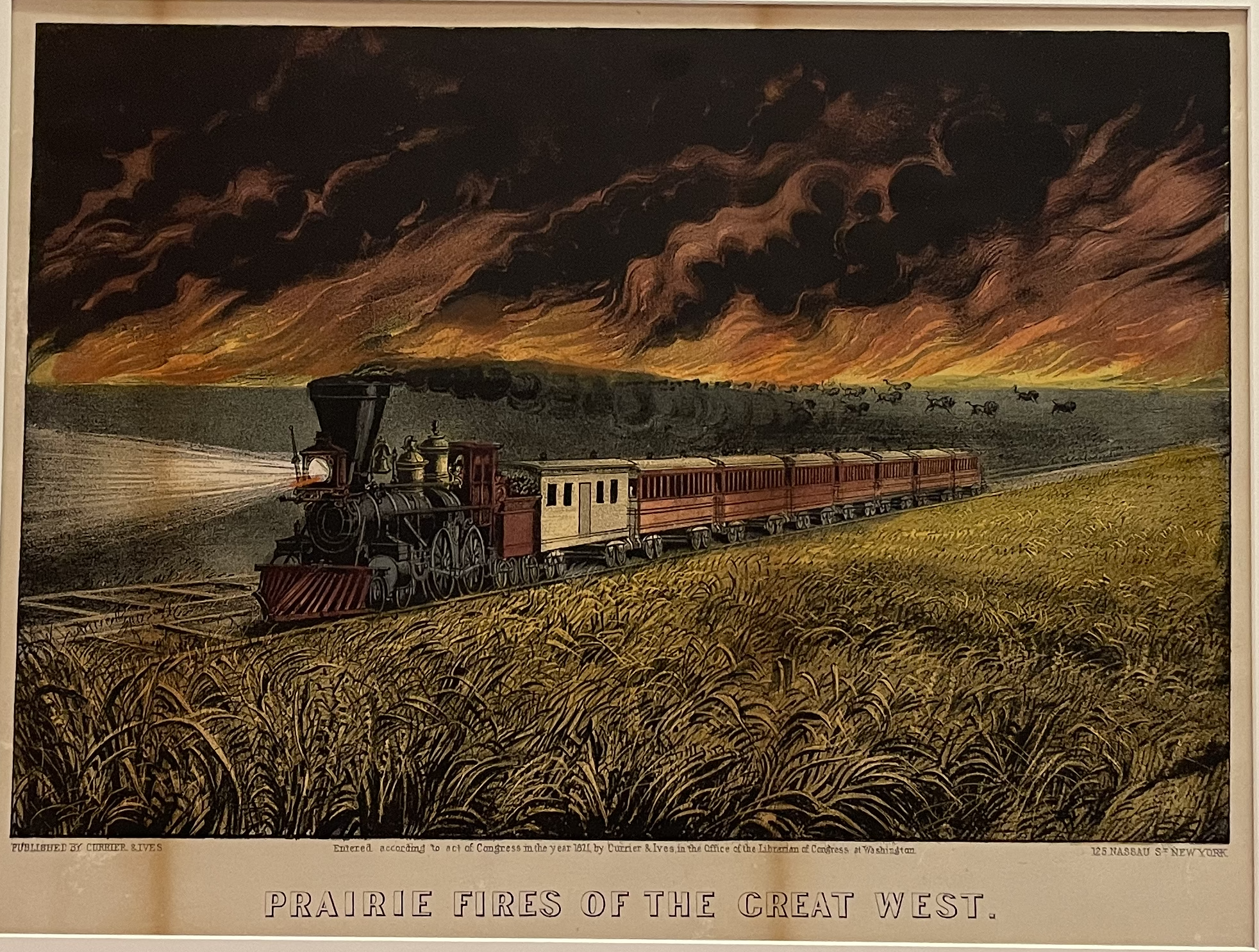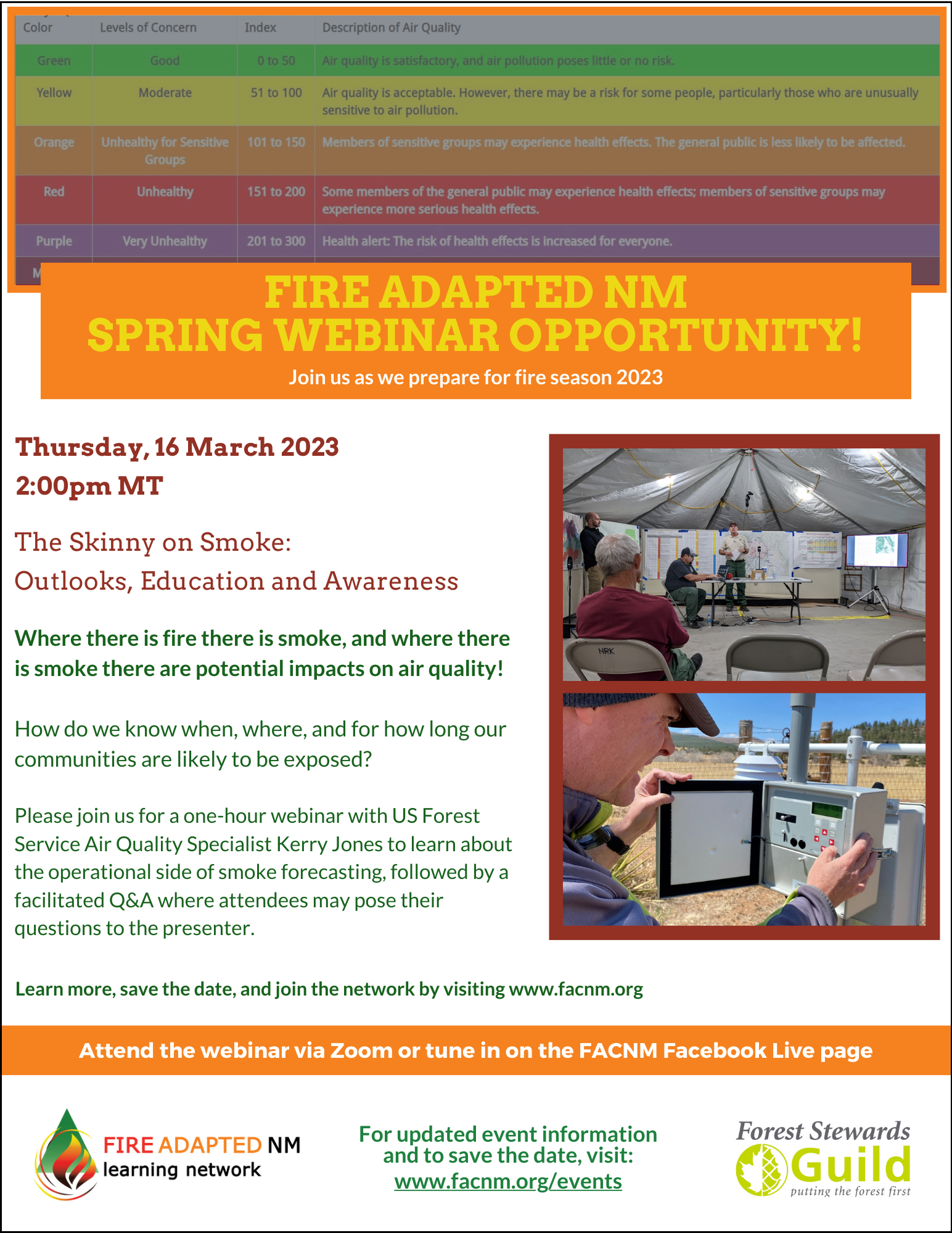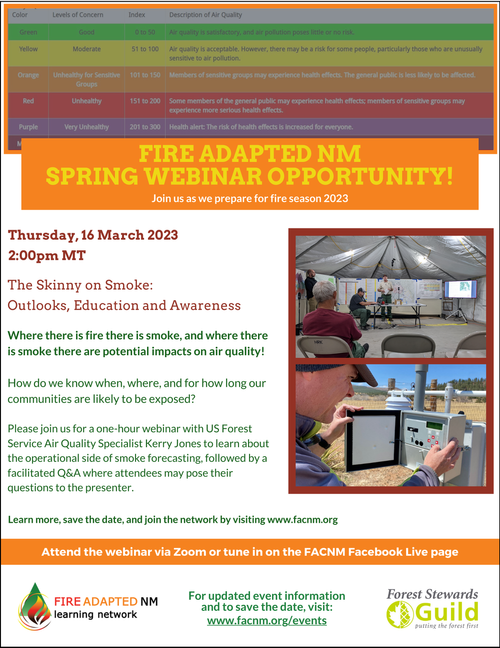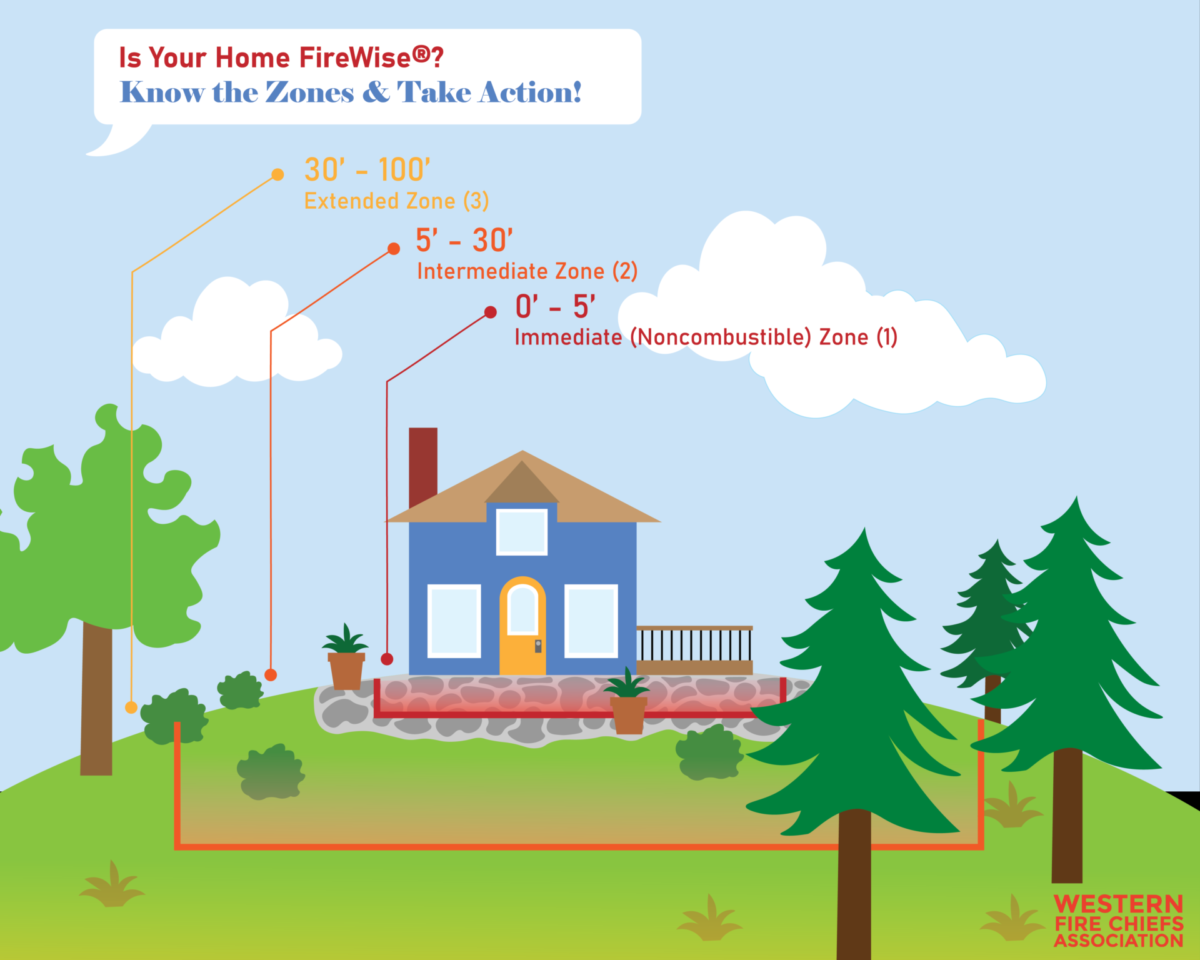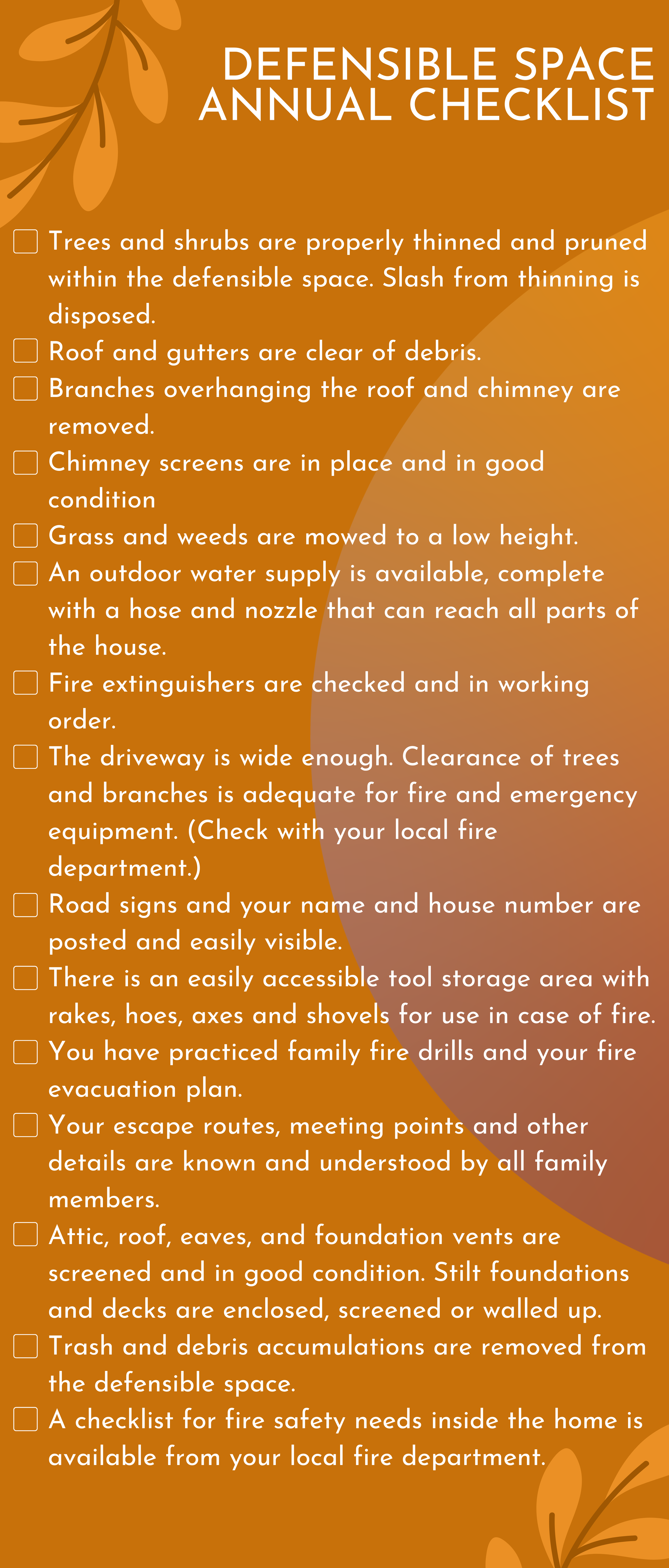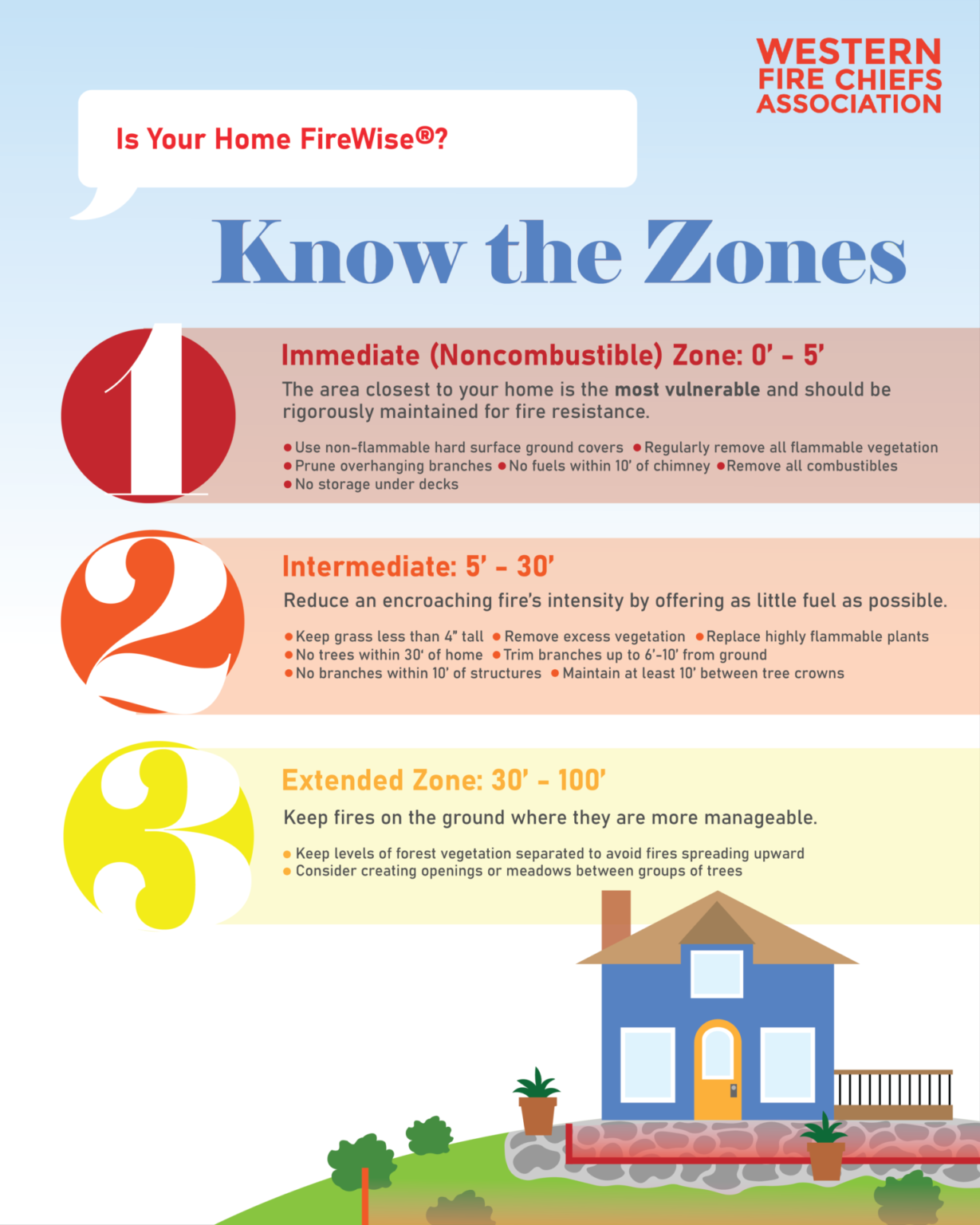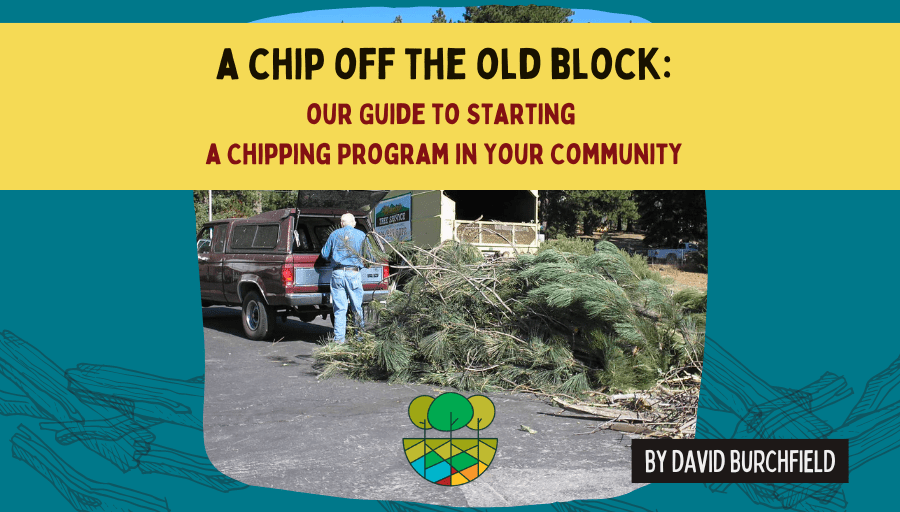Happy Wednesday, FACNM readers!
There are many organizations, entities, and companies who offer tools, templates, and guidelines to prepare for wildfire. We regularly cover these resources here in the blog, including a Fire Preparedness Day ‘Menu’ from the National Fire Protection Association, information about the Home Ignition Zone and Defensible Space, a video series called Seven Saturdays to a More Fire Resistant Home, and many more.
One aspect of these tools that is sometimes overlooked or under-investigated is climate change. This phenomena does and will continue to impact the likelihood, behavior, location, and severity of future wildfires, especially in the Southwest. Today’s Wildfire Wednesday addresses the parallels between climate readiness and Fire Adapted Communities as we dig into the Southwest Fire Menu, a product from Southwest FireCLIME: Research and Resources for Managing Fire in a Changing Climate.
Today’s Wildfire Wednesday features information on:
The Southwest Fire Menu basics
Useful tips and tricks to get started
How to get involved in the climate & fire conversation
Other resources and upcoming opportunities
Be well and stay fire safe as you enjoy the final month of summer!
Rachel
The Basics
An introduction to the Southwest Fire Menu
“Forests across the United States are expected to undergo numerous changes in response to the changing climate” write the authors of the second edition of Forest Adaptation Resources: climate change tools and approaches for land managers (2016). This paper, upon which the Southwest Fire Menu is based, “provides a collection of resources designed to help forest managers incorporate climate change considerations into management and devise adaptation tactics.”
While the source publication details all five steps in the Climate Change Response Framework, including Define, Assess, Evaluate, and Monitor, the SW Fire Menu homes in on Identify: adaptation strategies and approaches for managing fire under future climate conditions. It is a product of Southwest FireCLIME, a regional initiative that applies the principles of science–management partnership and the co-production of knowledge to identify information needs related to climate-fire-ecosystem dynamics within the management community. Under the umbrella of Adaptation Strategies and Approaches, the Menu offers 10 ways that natural resources professionals can approach land management under an uncertain climate future.
The 10 strategies
Sustain fire as a fundamental ecological process
Returning fire to landscapes and cultures where it has been artificially excluded has been shown to have a variety of ecological and social benefits, including the reduction in future wildfire activity that is more likely to occur at undesired spatial scale or severity.Reduce biotic and abiotic stressors affecting fire regimes
When biotic or abiotic stressors alter fuel regimes and fire risk, fire regimes can undergo drastic changes over short periods of time.Reduce the risk of unacceptable fire
Unacceptable fires may be ecologically uncharacteristic, socially undesirable, or both. Generally, management actions taken to reduce the risk of unacceptable fire will be preventative as opposed to reactive.Limit the effects of unacceptable fire and promote post-fire recovery
Fire regimes altered by climate change are more likely to result in fires that are considered unacceptable. Thus, preventative treatment (pre-fire) and active restoration (post-fire) are important considerations necessary for mitigating ecosystem effects and enhancing recovery.Maintain and enhance structural, community, and species diversity using fire and fuels treatments
Promoting higher structural, community, and species diversity from the stand to landscape scale will increase the likelihood that some subset of species and vegetation communities will persist in the future.Identify, promote, and conserve fire- and climate change-adapted species and genotypes
Conserving and promoting climate- and fire-resilient species and genotypes that are already present may allow a similar vegetation community to persist further into the future.Facilitate ecosystem adaptation to expected future climate and fire regimes
Promoting species adapted to future conditions increases the likelihood that forests and other fire-adapted ecosystems will persist through or recover from increased fire disturbances and novel fire regimes, reducing the likelihood of undesirable vegetation type conversion.Use fire events as opportunities for ecosystem realignment
The immediate aftermath of a disturbance provides a very practical window for realigning successional trajectories to expected future conditions instead of historical references.Promote organizational and operational flexibility
Management organizations that are able to respond adaptively and creatively to changing fire regimes may be able to increase efficiency and successful outcomes of management actions.Promote fire-adapted human communities
Individuals and communities have essential responsibilities within a climate adaptation framework, both in modifications to the physical environment and our collective understanding of challenges and solutions.
All 10 strategies are organized within a decision-making system commonly applied to management of post-fire landscapes called the R-A-D framework (Resist-Accept-Direct). Within the Menu, each strategy fits under one or more of these three concepts: Resistance, Resilience, and Transition.
Using the Menu
Tips and tricks to get started
The Menu is intended to be used as part of the Adaptation Workbook process developed by the Northern Institute of Applied Climate Science (NIACS) and available online through the Climate Change Response Framework (CCRF). The Adaptation Workbook provides a structured yet flexible approach for integrating climate change into conservation and management projects. CCRF offers an implementation guide for both natural resources professionals and land trusts. These guides offer a short description and example for each step of the adaptation process, as described above. They are intended to be utilized in the beginning planning stages of a natural resources project, but are good to refer to at any point. A four-page set of worksheets at the end of the guide can be used to do a quick and easy exploration of adaptation for a small project area.
Tactics for implementation and examples of each of the 10 strategies outlined in the Fire Menu can be found on FireCLIME’s website as a dropdown for each individual strategy; additional examples and suggestions can be found in the parent paper’s Appendix A. Fire Menu with Example Tactics.
Get Involved in Climate and Fire Planning
Next steps to learn more
Housed under the Southwest Climate Adaptation Science Center at University of Arizona, the Southwest Fire and Climate Adaptation Partnership (SWFireCAP) is an open and inclusive group of partners with a shared vision for working together to advance fire and climate adaptation in the southwestern US. Their work is founded in the belief that the monumental task of effective climate adaptation requires cross-organization collaboration and leveraging of people, time, resources, and funding. Initiated by the Southwest Climate Adaptation Science Center and the Southwest Fire Science Consortium, the SWFireCAP now has several partner organizations and is open to anyone interested in the intersection of climate change and fire in the Southwest. The group offers research briefs, project summaries and publication, roundtables for targeted discussion (on-the-ground adaptation and cultural burning), workforce development fellowships, and more.
The SWFireCAP’s vision is “working together to advance fire and climate adaptation in the Southwest.” They are guided by the principles of inclusivity, cultural awareness, collaboration, evidence informed, consensus based, transparency, and collective impact.
Other Resources
Webinars
Wednesday, 13 September at 12:00pm MDT: Grassification and Fast-Evolving Fire Connectivity and Risk in the Sonoran Desert
In the second webinar of a series on invasive grass-driven changes in dry desert systems, presenters will discuss their findings on fire dynamics in the 2020 Sonoran Desert Bighorn Fire near Tucson, AZ to better understand the changing nature of fire in desert systems which are increasingly experiencing conversion to grasslands.
Wednesday, 11 October at 12:00pm MDT: Prescribed Burns as a Tool to Mitigate Future Wildfire Smoke Exposure
Tune in for a webinar co-hosted by FACNM and the SW Fire Science Consortium! This presentation will introduce research on how targeted prescribed burn treatments in heavily forested Western states may have an outsized impact on improving air quality forecasts for the entire western U.S. by reducing the likelihood of future wildfire smoke.
Local conferences
November 6-10, 2023: 6th National Cohesive Wildland Fire Management Strategy Workshop
Read more and register now for this national gathering of fire management professionals working in in local, state, Tribal and federal agencies and organizations as well as non-governmental organizations and private companies! Hosted by the National Fire Leadership Council, the workshop will focus on peer-to-peer learning centered around a shared framework for the future.
Recent research
Home hazard assessments: the Science You Can Use bulletin titled “Sometimes Simple Works: The Value of Rapid Parcel-Level Wildfire Risk Assessments” focuses on how the rapid property assessments conducted by a Wildfire Research (WiRē) team for a Colorado neighborhood held up when the East Troublesome Fire burned through the area. WiRē has conducted assessments and public opinion surveys in the greater Santa Fe area, the results of which are expected to be released later this year.
Fire behavior in wildland versus prescribed fires: “Spot-Fire Distance Increases Disproportionately for Wildfires Compared to Prescribed Fires…” is based on work in the Loess Canyons Experimental Landscape in Nebraska. This research investigates how forest encroachment into grasslands drastically increases risks associated with wildfire, and how spot fire (embers from one fire causing a new fire ignition) distances associated with woody encroachment are much lower in prescribed fires used to control woody encroachment compared to wildfires.
Movie night
Rocky Mountain PBS aired the half-hour documentary “CO-Existing With Wildfire” in July 2023. It is now available to stream.
